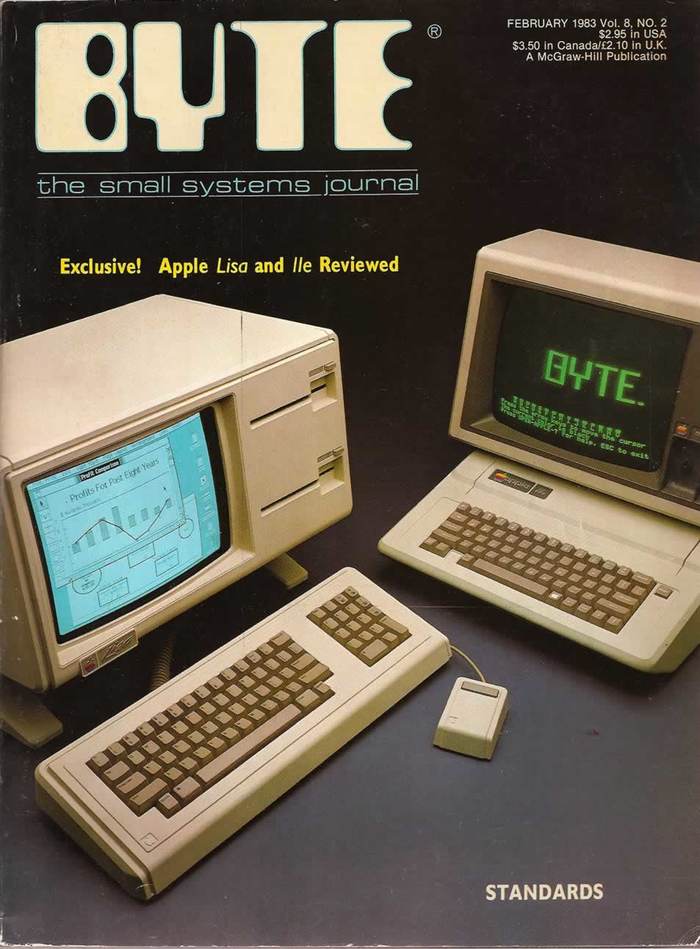-
When dealing with 30+ year old computers, you are going to have to do work on them to keep them running smoothly. Since I do not have the required training to service my Apple IIgs power supply myself, I decided to make a video about the mail way solutions that I chose to use to get my IIgs back in tip-top shape. -
Appril2 Accidental Apple IIgs Upgrades
What happens when you tumble down a retro-rabbit hole? You end up making an accidental Apple IIgs upgrade video for the retro computing Appril2 community event!
What started out as just trying to figure out how to use the Drive/Turbo CF flash card hard disk emulator turned into a chip pulling and drive servicing bonanza that had me going bananas by the end of the day.
Come watch me try not to use spicy language while I try to get a 3.5″ floppy drive from 1988 put back together again so I can us it with my Apple IIgs.
-
After #MARCHintosh Comes #Appril2

So, apparently, #Appril2 is a thing. And that is right up my Apple //e loving nerd alley!
Here’s my #Appril2 teaser video staring my Apple IIgs.
Safety Notice: No real Raspberry Pi computers were harmed during the making of this video.
-
Welcome Home Apple IIGS – Part 3
In the final installment of my Apple IIGS Welcome-Home-Athon video series, I talk about the various solutions I tried to get the GS working with a modern LCD display and see what it was like to use System 6.0.1 and Zany Golf on a color display.
-
Welcome Home Apple IIGS – Part 2
In this second installment of my Apple IIGS Welcome-Home-athon series, I work on testing out video output, booting up GS/OS 6.0.1, verify the RAM configuration, and check which ROM my little guy has. The RetroComputing Shenanigans Bus also takes us on a short trip to Dongle Town!
-
Welcoming Home an Apple IIGS from 1986

Mac Pro (2013) helps welcome home my Apple IIGS (1986) I’m an Apple //e fan, but in the mid-1980s, with the introduction of the Lisa in 1983 and the Macintosh in 1984, it was becoming clear that the largely text input-based Apple II line of computers needed an innovative refresh.
In 1986, Apple II fans got their new graphical interface upgrade in the form of the Apple IIGS.
Developed under codenames such as “Phoenix”, “Columbia”, and “Cortland” the Apple IIGS was an attempt to modernize the Apple //e and the non-expandable Apple IIc into a modern computer. At the time, attempts to replace the venerable Apple //e with the Apple III and the Apple IIc did not go according to plan. The Apple III ended up being a commercial failure and customers favored the Apple //e over the IIc largely in part due to the //e’s expansion card bays.
The Apple IIGS is a curios machie because it encapsulates both what has come before, the Apple II platform, while embracing a future with a graphical interface, a mouse, improved sound capabilities, and a 3.5-inch floppy drive – just like the Macintosh. Powering the Apple IIGS is the new 16-bit 65C816 chip running at 2.8MHz. The 65C816 is a 65C02 compatible processor, meaning that it can emulate the CPU used in prior Apple IIs. The 65C816 also has two run modes: the native 2.8MHz mode for running software written specifically for the graphical GS/OS operating sytem, and a 1MHz mode for running a customer’s older Apple II series software.
In addition to the new CPU, the Apple IIGS also includes 256kb of system RAM, expandable out to a total of 8MB. The “GS” in the IIGS name stands for Graphics and Sound, and this Apple II is able to deliver. The new GUI interface was made possible due to a new super Hi-Res video mode capable of putting a 16-color palette up on a 200×320 screen. The included Ensoniq Mirage sound chip improved the audio features of the machine.
There is a lot going on under the hood of this Apple II and that’s because the designers needed to address two project goals. First, make it compatible with the older generation of Apple II hardware and software. Second, bring the technology advancements from the Apple III, the Lisa, and the Macintosh to the Apple II line. In short, the IIGS ended up becoming a bridge from the Apple II line to the Macintosh line.1 This feat was made possible by Apple’s new custom integrated circuit (IC) the Mega II. The Mega II included the functionality of several of the ICs from the Apple //e and the IIc into the IIGS motherboard. In the end, the IIGS was able to run at least 90% of the titles in the Apple II software library. With the use of an optional disk controller card and floppy disk drive, the Apple IIGS could also read and write 5.25-inch disks created for earlier Apple IIs.
The Apple IIGS was forward looking too. For example, the graphical GS/OS environment used 114 of the same QuickDraw calls as was found on the Macintosh. The graphical interface program used to access disks, draw windows, and work with menus and files is called the Finder and is modeled after the Macintosh desktop program of the same name. The Apple IIGS also has an Apple Desktop Bus (ADB) port for connecting up to 16 daisy-chained devices. The same ADB technology that is used on the Macintosh, allowing keyboards and mice to be interchangeable. And, finally, the IIGS is the first Apple II computer to include built in support for AppleTalk networking. Yes, the Apple IIGS and the Macintosh could talk to each other and share files over an AppleTalk network.
The Apple IIGS was released in September 1986 with a base price of $999. Customers would then need to add one or more disk drives, a color monitor, and possibly a printer, easily raising the price of the machine to the $2,499 – $3,199 range.
The Apple IIGS did succeed in delivering on it’s promise to be true (and compatible) to it’s Apple II roots and simultaneously embrace a graphical interface future. And for Apple II fans, that was a positive point. However, in terms of the state of technology in 1986, many journalists coving technology at the time considered the Apple IIGS to be too slow and too expensive when compared with contemporary machines of the day, including the Macintosh, the Amiga 500, and the Atari ST.
In 1988, waiting for my back ordered Apple IIGS to be delivered by ComputerLand, I was excited to this new computer. For me, I could leverage everything that I had learned about my Apple //e with the IIGS and share hardware and software between the two machines. I will admit that my cousin’s Amiga 500 had way better looking games, but I loved my Apple IIGS. Unlike the closed case Amiga 500, the Apple IIGS could be easily opened allowing me to tinker around inside and add new expansion cards, foreshadowing my career in Information Technology. Today, I still tinker around inside PCs and servers thanks, in no small part, to the openness of the Apple II platform.
Apple II Forever!
-
Byte Magazine Archive Available

Byte magazine Feb. 1983 Cover While doing some research into the Apple IIe (1983) and the Apple IIGS (1986), I came across a large Byte magazine archive that is available on the Internet Archive.
The magazine archive is labeled as “complete” and has issues from Sept. 1975 through Apr. 1989. And while I can’t vouch for the entire archive, the three issues that I looked at had clean and easy to read articles from the issues that I wanted to read. Here are the links to the articles I was reading earlier this week.
Feb. 1983 – Apple IIe Review by Robin Moore pg 68
Oct. 1986 – Apple IIGS Preview by Gregg Williams and Richard Greham pg 84
Apr. 1987 – Apple IIGS Review by Philip Chien pg 223
I really appreciate that these archives exist. Reading computer magazines before I started my professional IT career was a fun way that I learned about computers. A+ and inCider were two of my favorites. Once I started working in IT, I loved to read Windows NT Magazine, PCWeek/eWeek, MacWeek, and Information Week.
- apple //e, apple //gs, apple tv, apple watch, imac, iphone, ipod, ipod touch, mac, mac pro, power mac, powerbook
Happy 40th Birthday, Apple! Stay Foolish!
[youtube https://www.youtube.com/watch?v=mtY0K2fiFOA]Apple – 40 Years in 40 Seconds video originally show during Apple’s Spring 2016 eventIn honor of Apple’s 40th birthday today, I decided to help celebrate by listing out all of the Apple gear that I have either owned (my own personal hardware) or I have used at work (which was a big Mac shop until the mid-2000’s).
Items that I owned have a picture and the approximate year in which I started using it. All of the hardware listed below has been listed in chronological order by the year Apple released it.
Apple //e, AppleImageWriter II (1986)
Apple IIgs (1988)Macintosh SE/30 (1995)Macintosh Classic (1990)Macintosh IIci (1996)Macintosh LC (1992)Macintosh IIsi (1995)Macintosh PowerBook 100 (1992)Macintosh PowerBook Duo 230 and DuoDock (1993)Apple QuickTake 100 camera (1995)Power Macintosh 7100/66av (1995)Macintosh PowerBook Duo 2300c/100 and DuoDock (1996)Macintosh PowerBook 5300ce (1996)Apple StyleWriter 1200 (1996)Apple Newton MessagePad 2000 (1998)Power Macintosh 7600 (1997)Macintosh PowerBook G3 “Wall Street” (1998)Power Macintosh G3 Blue and White (1999)Power Mac G4 Cube with Apple 17-inch Cinema Display and Apple Pro Speakers (2001)iMac 17-inch Flat Panel (2002)PowerBook G4 DVI (2002)Power Mac G4 Mirrored Drive Doors (2002)Power Mac G4 QuickSilver with Apple 20-inch Cinema Display (2003)Apple iPod with Dock Connector (2003)Xserve and Xserve RAID (2004)Apple iPod 5th Generation (2005)MacBook 13-inch (2006)Mac Pro with 23-inch Cinema Display (2006)iPod Touch (2008)Apple TV 1st Generation (2009)MacBook Pro 17-inch (2010)iPad with Wi-Fi (2010)iPhone 4s Sprint (2011)iPad 3rd Generation with Wi-Fi (2012)iPad mini 1st Generation with Wi-Fi (2013)Apple TV 3rd Generation (2013)iPad Air (2013)iPhone 5s Sprint (2013)iPhone 6s Plus Sprint (2015)iMac Retina 5k, 27-inch (2016)

































